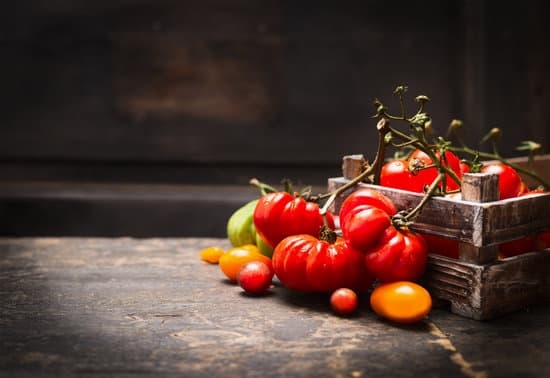Indoor urban gardening ideas have become increasingly popular as more people embrace the benefits of bringing greenery into their urban living spaces. With limited outdoor space in cities, indoor gardening offers a creative and practical solution for cultivating plants. Not only does indoor urban gardening add a touch of nature to indoor environments, but it also contributes to cleaner air quality and improved mental well-being.
In urban settings, where access to traditional gardens may be scarce, indoor gardening allows individuals to enjoy the beauty of plants while maximizing limited space effectively. By carefully selecting plants that thrive indoors and require minimal maintenance, urban dwellers can create vibrant and lush garden sanctuaries within their homes or apartments. From herbs and succulents to ornamental foliage, there are countless options for creating a personalized indoor garden oasis.
Whether you are a seasoned gardener or new to the world of indoor plants, this article will explore various aspects of indoor urban gardening to help you successfully cultivate your own green haven. From choosing the right plants for your space to innovative container and lighting solutions, we will provide practical tips and creative ideas to inspire your indoor gardening journey.
Let’s dive into the world of indoor urban gardening and discover how you can transform your living space into a flourishing botanical retreat.
Choosing the Ideal Plants for Indoor Urban Gardening
Indoor urban gardening offers a wonderful opportunity to bring greenery into small living spaces and create a thriving oasis in the heart of the city. When choosing plants for your indoor garden, it is essential to select varieties that are low-maintenance and space-saving.
One excellent option is succulents, which come in a wide range of shapes, sizes, and colors, making them perfect for adding visual interest to your space without requiring constant care. Additionally, herbs like basil, mint, and parsley are not only easy to grow indoors but also provide fresh flavors for cooking.
Another great choice for indoor urban gardening is air plants, which do not require soil to grow and can be displayed in creative ways such as hanging from the ceiling or placed in geometric terrariums. These unique plants are ideal for those with limited space as they can be arranged on shelves or tabletops without taking up much room. Furthermore, spider plants are fantastic options for indoor environments as they are resilient and known for their air-purifying qualities.
In order to help you navigate the vast array of plant options available, it is crucial to consider factors such as light conditions in your home, maintenance requirements, and aesthetic preferences. By selecting plants that suit your lifestyle and space constraints, you can create a vibrant indoor urban garden that brings joy and tranquility to your living environment.
| Plant | Description |
|---|---|
| Succulents | Low-maintenance; come in various shapes and colors |
| Herbs (e.g. basil, mint) | Easy to grow indoors; provide fresh flavors |
| Air Plants | No soil required; can be displayed creatively |
| Spider Plants | Resilient; known for air-purifying qualities |
Containers and Potting Mix
Indoor urban gardening is a popular trend that allows city dwellers to bring a touch of greenery into their homes, no matter how limited the space may be. Choosing the right plants is essential, but equally important is finding creative ways to plant them in small spaces. Utilizing containers and potting mix effectively can make a significant difference in the success of your indoor garden.
When selecting containers for your indoor urban garden, opt for options that are not only functional but also aesthetically pleasing. Consider using hanging planters, vertical wall planters, or even repurposed items like mason jars or old tin cans. Here are some creative ideas for containers to inspire your indoor gardening project:
- Hanging planters made from macramé or rope
- Vertical wall planters with pockets for individual plants
- Terrariums or glass containers for succulents and air plants
- Repurposed tea tins or coffee cans painted in vibrant colors
In addition to choosing the right containers, selecting the appropriate potting mix is crucial for the health and growth of your indoor plants. Opt for a high-quality potting mix specifically designed for indoor plants, as traditional garden soil may be too heavy and dense. Here are some functional ideas for potting mix options that are suitable for small spaces:
- Lightweight potting mix with added perlite or vermiculite for improved drainage
- Peat moss-based mix combined with compost for nutrient-rich soil
- Cactus or succulent soil mix with added sand or gravel for better aeration
- Hydroponic growing medium for water-based indoor urban gardening setups.
By getting creative with your choice of containers and selecting the right potting mix, you can effectively maximize the use of small spaces in indoor urban gardening projects while providing a thriving environment for your plants. Remember that proper care and maintenance play a vital role in keeping your indoor garden healthy and beautiful.
Lighting Solutions
Indoor urban gardening is a growing trend that allows city dwellers to bring nature into their homes and create green spaces in small urban settings. One of the key elements to successful indoor gardening is providing adequate light for plants to thrive. When choosing plants for indoor urban gardening, it’s crucial to consider their specific light requirements and ensure they receive the right amount of light to support healthy growth.
One popular option for indoor urban gardening is selecting low-maintenance plants that are well-suited for the limited space available in urban environments. Succulents, air plants, and herbs like basil and mint are excellent choices for indoor gardens as they require minimal care and can thrive with moderate sunlight. These plants can be placed near windows or under artificial lights to provide them with the necessary light for photosynthesis.
In addition to natural light from windows, artificial lighting solutions play a vital role in ensuring the success of indoor urban gardening. LED grow lights are an energy-efficient option that can mimic natural sunlight and provide plants with the full spectrum of light they need to thrive.
Positioning grow lights at the right distance from plants, typically 12-18 inches above them, helps prevent issues like sunburn or inadequate lighting. With these lighting solutions in place, you can enjoy a thriving indoor garden year-round regardless of your home’s natural light conditions.
| Low-Maintenance Plants | Artificial Lighting Solutions |
|---|---|
| Succulents | LED Grow Lights |
| Air Plants | Positioning Grow Lights Correctly |
| Basil & Mint | Mimicking Natural Sunlight |
Watering and Humidity Levels
Indoor plants require the right balance of watering and humidity to thrive in an indoor environment. This section will delve into the key factors to consider when it comes to maintaining the health of your indoor urban garden through proper watering techniques and humidity levels.
Watering Tips for Indoor Urban Gardens
One of the most common mistakes in indoor gardening is overwatering or underwatering plants. It is essential to understand the individual needs of each plant species, as some may require more frequent watering than others. One helpful tip is to check the soil moisture before watering by inserting your finger about an inch deep into the soil. If it feels dry, it’s time to water.
When watering your indoor plants, ensure that water drains out properly from the pot to prevent waterlogging, which can lead to root rot. Using pots with drainage holes at the bottom can help facilitate proper drainage. Additionally, using room temperature water can prevent shocking the plants with cold water.
Humidity Control for Indoor Plants
Maintaining adequate humidity levels is crucial for the overall health of indoor plants, especially in urban environments where air quality may be less optimal. To increase humidity around your plants, you can group them together or place a shallow tray filled with water and pebbles near them. As the water evaporates, it will create a more humid microclimate for your plants.
Alternatively, you can use a humidifier to control humidity levels indoors. This is particularly beneficial during winter months when central heating systems can dry out the air. Regular misting of plant leaves with a spray bottle filled with water can also help increase humidity and prevent dust buildup on foliage. By paying attention to both watering practices and humidity levels, you can ensure that your indoor urban garden flourishes in its environment.
Vertical Gardening
When space is limited in urban environments, vertical gardening can be a game-changer for plant enthusiasts. By utilizing wall space effectively, indoor urban gardeners can maximize their growing area and add a touch of greenery to their living spaces. Here are some creative ideas and strategies for implementing vertical gardening in your indoor garden:
- Vertical planters: Invest in vertical planters that can be mounted on walls or hung from ceilings to save floor space while adding visual appeal to your indoor garden. These planters come in various sizes and designs, allowing you to customize your vertical garden according to your preferences.
- Hanging baskets: Opt for hanging baskets that can showcase cascading plants such as ivy, pothos, or string of pearls. These baskets not only add a decorative element to your indoor garden but also help create a lush green backdrop against your walls.
- Wall-mounted shelves: Install wall-mounted shelves or racks specifically designed for holding potted plants. This way, you can arrange your plants at different heights, creating a visually interesting display while optimizing the use of vertical space in your home.
In addition to these ideas, consider incorporating trellises, grids, or even repurposed ladders into your vertical gardening setup. These structures provide support for climbing plants like philodendrons or jasmine, adding height and dimension to your indoor garden. With a bit of creativity and strategic planning, you can transform any blank wall into a vibrant oasis of greenery.
- Use lightweight materials: When setting up vertical gardens indoors, opt for lightweight containers and hanging systems to prevent strain on walls and ceilings. Consider using materials like fabric pockets or felt planters that are durable yet gentle on surfaces.
- Position plants strategically: Place taller plants towards the back of your vertical garden to ensure adequate light exposure for all plants. Arrange shorter plants towards the front so that they receive sufficient sunlight without being overshadowed by larger foliage.
- Maintain proper drainage: Proper drainage is crucial when planting vertically to prevent waterlogged soil and root rot. Ensure that your containers have drainage holes and use a well-draining potting mix to promote healthy root growth in your vertical garden.
By embracing the concept of vertical gardening in indoor urban spaces, you can turn even the smallest nooks and crannies into flourishing gardens. Whether you’re a beginner looking to start small or an experienced gardener seeking new challenges, incorporating vertical elements into your indoor garden will elevate both the aesthetic appeal and functionality of your green oasis.
DIY Projects for Indoor Urban Gardening
Are you looking to add a personal touch to your indoor urban garden? DIY projects are a fun and creative way to not only enhance the aesthetic appeal of your space but also showcase your unique style. By making your own planters and trellises, you can customize the look of your indoor garden while maximizing limited space in urban settings.
One idea for a DIY planter is to upcycle old containers such as tin cans, mason jars, or wooden crates. These can be easily transformed into charming plant pots with a bit of paint, decorative accents, or even fabric covers.
Not only does this help reduce waste by repurposing items, but it also adds a touch of personality to your indoor garden. Additionally, creating hanging planters using macrame or wire holders can free up valuable floor space while adding visual interest to your decor.
For those looking to incorporate trellises into their indoor gardening setup, consider making your own using materials like bamboo sticks, copper pipes, or reclaimed wood. These structures provide support for climbing plants like ivy or pothos while adding a vertical element to your space.
You can get creative with designs by weaving string or wire between the supports to create intricate patterns or shapes. DIY trellises not only serve a functional purpose but also serve as eye-catching features in an indoor garden.
Another fun DIY project for indoor urban gardening is creating a living wall or vertical garden. This involves mounting plants on a vertical surface such as a wooden pallet, picture frame, or shoe organizer. By arranging plants in an artistic manner, you can turn any blank wall into a vibrant display of greenery. Vertical gardens are not only visually striking but also help maximize space in small apartments or homes without sacrificing the beauty of nature within your living environment.
Incorporating these creative DIY projects into your indoor urban gardening setup allows you to express your individuality while reaping the benefits of bringing nature indoors. From handmade planters and trellises to vertical gardens, there are endless possibilities for transforming your space into a lush oasis that reflects your style and love for plants. Let these projects inspire you to cultivate an indoor garden that is both beautiful and sustainable in any urban setting.
Maintenance and Care Tips
Indoor urban gardening is a great way to bring the beauty of nature into your urban living space. However, maintaining and caring for your indoor garden is essential to ensure the longevity of your plants. By following some simple tips and guidelines, you can keep your indoor garden healthy and thriving.
Regular Inspections and Monitoring
One key aspect of maintaining an indoor garden is to regularly inspect your plants for any signs of disease, pests, or nutrient deficiencies. Keep an eye out for yellowing leaves, wilting foliage, or unusual spots on the leaves. By catching any issues early on, you can address them before they have a chance to spread to other plants in your indoor garden.
Proper Watering Techniques
Watering is crucial for the health of your indoor plants, but it’s important not to overwater or underwater them. Different plant species have varying water needs, so it’s essential to research each plant’s requirements.
A good rule of thumb is to check the soil moisture level before watering – if the top inch of soil feels dry to the touch, it’s time to water. Using a watering can with a narrow spout can help you target the water directly at the base of the plant without getting water all over your floor.
Pruning and Deadheading
Regular pruning and deadheading are necessary tasks in maintaining an indoor garden. Pruning helps encourage new growth and prevents overcrowding among plants. Deadheading involves removing spent flowers or damaged leaves to promote continuous blooming and keep your plants looking neat and healthy.
By incorporating these maintenance and care tips into your indoor urban gardening routine, you can enjoy a vibrant and flourishing indoor garden that adds life and greenery to your urban living space. Remember that each plant has unique needs, so be sure to research specific care instructions for each plant in your indoor garden for optimal results.
Conclusion
In conclusion, indoor urban gardening offers a multitude of benefits for city dwellers looking to bring greenery into their homes and apartments. Not only does it provide a sense of tranquility and connection to nature in urban environments, but it also promotes sustainability by reducing carbon footprint and supporting cleaner air quality indoors.
The keyword “indoor urban gardening ideas” emphasizes the importance of exploring creative and innovative ways to cultivate plants in small spaces, ultimately enhancing the quality of life for urban residents.
By carefully selecting low-maintenance and space-saving plants, utilizing vertical gardening techniques, and incorporating DIY projects for planters and trellises, individuals can create thriving indoor gardens even in the midst of a concrete jungle. Providing proper lighting, watering routines, and maintaining optimal humidity levels are crucial aspects of caring for indoor plants effectively. These elements not only contribute to the health and growth of plants but also add aesthetic appeal to indoor spaces.
Overall, embracing indoor urban gardening is a step towards sustainable living practices that benefit both individuals and the environment. As we continue to seek ways to harmonize urban living with nature, integrating greenery into our indoor spaces through creative ideas and thoughtful care can significantly enhance our well-being while reducing our ecological footprint. Indoor urban gardening serves as a reminder that even in bustling cities, there is always room for growth, beauty, and harmony with nature.
Frequently Asked Questions
What Plants Are Best for Urban Gardening?
Urban gardening requires plants that are well-suited for limited space and often grow well in containers. Some great options include herbs like basil, mint, and parsley, as well as vegetables like cherry tomatoes, peppers, and salad greens. These plants thrive in small spaces and can be easily grown on balconies or windowsills.
How Do I Start a Small Urban Garden?
Starting a small urban garden involves assessing the available space, whether it’s a balcony, rooftop, or even just a sunny windowsill. Begin by selecting the right containers for your plants and ensuring proper drainage. Choose suitable plants based on light conditions and climate, then regularly water and fertilize them as needed to promote healthy growth.
How Do I Turn My Room Into an Indoor Garden?
Transforming a room into an indoor garden is a fantastic way to bring nature indoors. Start by assessing the natural light sources in the room to determine which plants will thrive there.
Consider using hanging planters, wall-mounted shelves, or decorative pots to maximize space without cluttering the room. Regularly watering, pruning, and caring for your indoor plants will help create a peaceful green oasis in your living space.

Welcome to my gardening blog! I am passionate about plants and enjoy sharing my knowledge and experiences with others. In this blog, I will write about everything related to gardening, from tips on how to get started to updates on my own garden projects.





